Restaurant Industry Trends: Key Takeaways
- Technology such as AI and blockchain is transforming restaurant operations for greater efficiency and transparency.
- Virtual restaurants and unique spaces are changing the traditional dining model.
- Sustainable practices are increasingly vital for environmental and regulatory compliance.
The restaurant industry is on the cusp of a dynamic transformation.
What used to be a space dominated by culinary creativity is now equally influenced by cutting-edge technologies, innovative business models and a growing focus on sustainability.
Whether you're an industry professional, a restaurant owner or just a curious foodie, these insights will help you stay ahead of the curve.
1. AI-Powered Restaurant Operations
First up on our list of 2026 restaurant trends is artificial intelligence. No longer confined to Silicon Valley, it’s revolutionizing restaurants in unexpected ways.
According to a survey from 2024, 79% of the U.S. restaurant operators are already using or are considering using AI to handle everything from taking orders and preparing food to managing their business and marketing efforts.
At its core, AI is helping operators tackle age-old problems like waste, operational inefficiency and fluctuating customer demand.
AI is transforming restaurant operations in three key areas:
Menu optimization
By analyzing data, AI helps restaurants identify their top-performing dishes, allowing them to set competitive pricing and reduce food waste.
This ensures that popular menu items are prioritized and priced appropriately for both profitability and customer satisfaction.
See also: How To Budget a Restaurant: A Guide for New Restaurant Owners and Managers
Staff scheduling
With AI, restaurants can anticipate peak dining hours based on historical data.
This helps optimize staffing levels, ensuring there are enough Servers, Chefs and support staff during busy periods, which enhances the overall customer experience.
Inventory management
AI technology tracks stock levels in real time, automating reordering processes.
This helps to prevent shortages or overstocking, leading to more efficient inventory management and cost savings.
2. Smart Kitchen Equipment
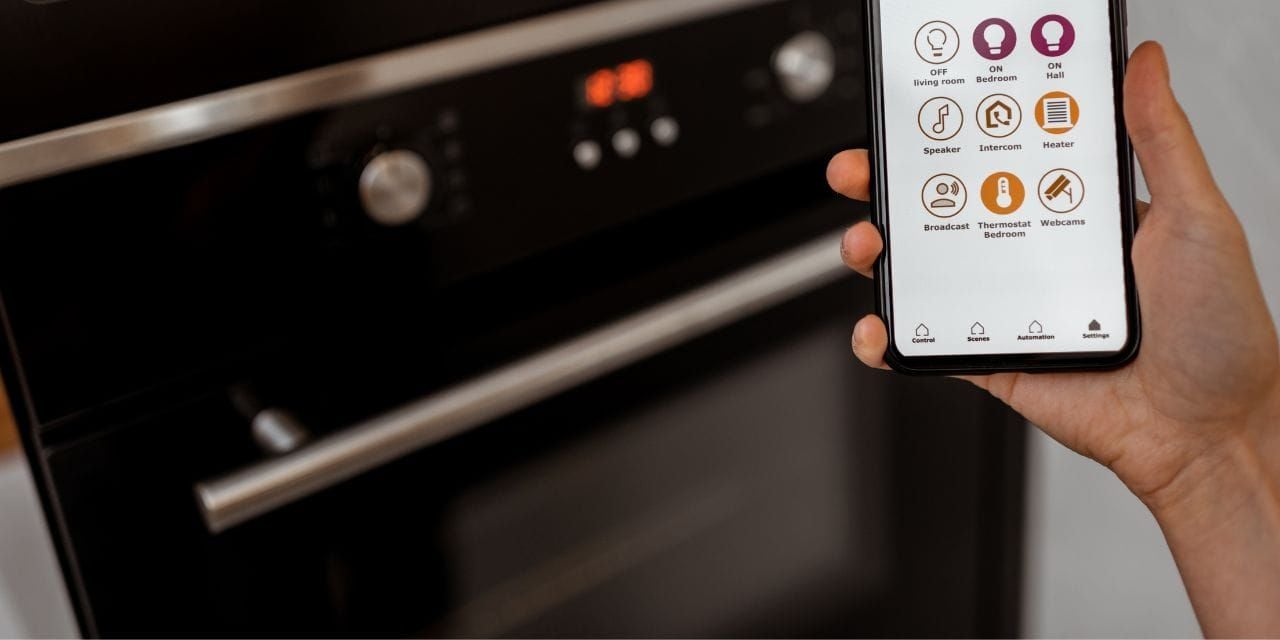
Smart kitchen technology addresses some of the most pressing operational challenges in restaurants.
Modern smart ovens can cook food 20% faster than traditional combi ovens and up to 80% faster than conventional convection technology.
Consequently, these systems enable:
- Remote monitoring and control of kitchen equipment
- Automated temperature and cooking time adjustments
- Programmable recipe management for consistency
Integrating smart kitchen equipment with Wi-Fi connectivity allows for seamless remote management, enabling operators to push and pull recipes, view equipment status and receive detailed service diagnostics from anywhere.
This not only reduces downtime but also ensures that operations remain efficient and safe. The result? Faster service, better food and happier customers.
3. Blockchain for Supply Chain Transparency
Another one of the top restaurant trends for 2026 is blockchain technology, which is transforming food traceability in restaurants.
Indeed, this technology has reduced food tracking time from nearly 7 days to just 2.2 seconds in major retail operations.
Specifically, restaurants can now track ingredients from farm to table, ensuring food safety and authenticity.
This system enables restaurants to:
- Trace contaminated products to their source quickly
- Reduce food waste through selective recalls
- Verify the authenticity of premium ingredients
- Ensure supplier compliance with quality standards
By implementing blockchain technology, restaurants can streamline operations and build trust with customers through greater transparency.
See also: Best Practices in Restaurant Operations Management
4. Augmented Reality (AR) Dining Experiences
Augmented reality is taking customer engagement to the next level by transforming how diners interact with menus and spaces.
With AR, customers can visualize their meals before they order, seeing 3D renderings of dishes complete with detailed ingredient and nutritional information.
Beyond the menu, AR is being used to create immersive dining experiences that surprise and delight.
From virtual tours of the wine cellar to interactive storytelling about a dish’s origins, AR adds layers of excitement that make a meal truly memorable.
Restaurants leveraging this technology are positioning themselves as pioneers in the dining experience.
Here’s an example of how AR is used in Krasota, one of the most expensive restaurants in Dubai:
5. Edge Computing in Operations
Edge computing is a technology that processes data closer to its source, rather than sending it to distant servers or the cloud.
This means that instead of waiting for information to travel to a remote server for processing, data is handled on-site, right where it’s generated, which results in faster and more reliable operations.
For restaurants, this technology offers several benefits. First, it allows for faster order processing and more reliable payment systems.
Since the data doesn’t need to travel far, transactions and orders happen in real time. It also enables better inventory management, with the ability to track stock levels as they change throughout the day.
Edge computing also ensures that essential operations continue smoothly, even when there are internet outages or system disruptions.
In these situations, local data processing keeps things running without relying on external servers.
Additionally, edge computing improves food safety by monitoring critical factors like temperature and humidity, helping ensure that food is stored in the right conditions and remains safe for customers.
6. Virtual Restaurants and Micro-Kitchens
The rise of delivery culture has sparked the growth of virtual restaurants and micro-kitchens, redefining the traditional dining model.
Virtual restaurants operate without physical storefronts, focusing solely on delivery services.
This reduces overhead costs and allows operators to experiment with diverse cuisines and menus.
Micro-kitchens, on the other hand, are compact spaces designed for maximum efficiency. Located in high-traffic areas, they bring food closer to customers, speeding up delivery times.
Many restaurants are adopting a hub-and-spoke model, where centralized production facilities support multiple smaller locations, optimizing both cost and convenience.
7. Alternative Restaurant Spaces
As rental costs soar, restaurants are finding creative solutions by transforming unconventional spaces into dining venues.
That's why one of the top restaurant trends for 2026 is historic buildings, former industrial sites and even retrofitted vehicles being repurposed to create unique atmospheres.
These spaces not only save money but also attract customers looking for a dining experience that stands out.
Using alternative spaces allows restaurants to embrace their local history or culture while overcoming financial barriers.
These venues often become community hubs, offering a sense of novelty and nostalgia that traditional locations may lack.
One innovative example is The Wash, a collection of five restaurants and a bar located inside retrofitted car wash stalls.
This creative concept transforms an unlikely setting into a vibrant dining destination, making the most of a space that would otherwise go unused.
By reimagining old car wash stalls, The Wash has not only minimized overhead costs but also captured the attention of diners looking for something unconventional.
Click on the video below to learn more about this innovative concept.
8. Sustainability Innovations

Sustainability has been a growing trend in the restaurant industry for the past few years.
In 2026, it will become even more important as Restaurant Managers and owners face increasing pressure from eco-conscious consumers and regulations.
Technologies like waste-to-profit systems — such as anaerobic digesters and composting — are evolving, with more advanced methods for converting food waste into biogas or fertilizer.
Energy-efficient heat recovery systems will become more common, repurposing waste heat for use throughout the kitchen.
Local sourcing, on-site farming and eco-friendly packaging solutions are also expanding, providing more sustainable ways to reduce carbon footprints and waste, while enhancing ingredient quality and freshness.
9. Personalized Dining Through Data
Data is becoming one of the most powerful tools in the restaurant industry.
Modern customer relationship management (CRM) systems allow operators to gather insights into their customers’ preferences, allergies and ordering habits.
This data can then be used to offer personalized experiences, such as tailored menu recommendations or exclusive promotions.
Personalized dining doesn’t just enhance the customer experience — it also encourages repeat visits and boosts loyalty, helping restaurants thrive in an increasingly competitive market.
10. Subscription-Based Dining Services
Subscription-based dining services are quickly gaining traction, with 55% of adults expressing interest in restaurant subscription programs.
These models offer compelling benefits for both restaurants and customers.
For restaurants, the advantages include predictable recurring revenue streams, which help reduce operational uncertainty.
Subscription programs also streamline inventory management and improve overall cost efficiency.
Beyond that, they enhance customer loyalty by creating an ongoing relationship between diners and the restaurant, which can increase customer lifetime value.
Notably, major chains have already successfully implemented subscription programs.
Panera’s beverage subscription, for example, now accounts for 25% of the chain’s transactions, creating a reliable revenue stream while also boosting food sales.
Embrace Innovation To Stay Ahead
The restaurant industry is all about innovation and adaptability.
With advancements like AI-driven operations, sustainable practices and immersive dining experiences, these restaurant trends for 2026 are shaping a more efficient, engaging, and responsible future for restaurants.
Those who embrace these changes won’t just survive — they’ll set new benchmarks for excellence in the industry.
As the dining scene continues to evolve, staying informed about the latest trends and strategies is crucial for restaurant owners and managers.
Platforms like OysterLink offer valuable resources, from up-to-date industry insights to labor laws and salary trends. By taking advantage of these tools, restaurants can streamline operations, attract top talent and stay ahead in an increasingly competitive market.
The future of dining is already here — now is the time to innovate, and OysterLink is here to help guide you through it.
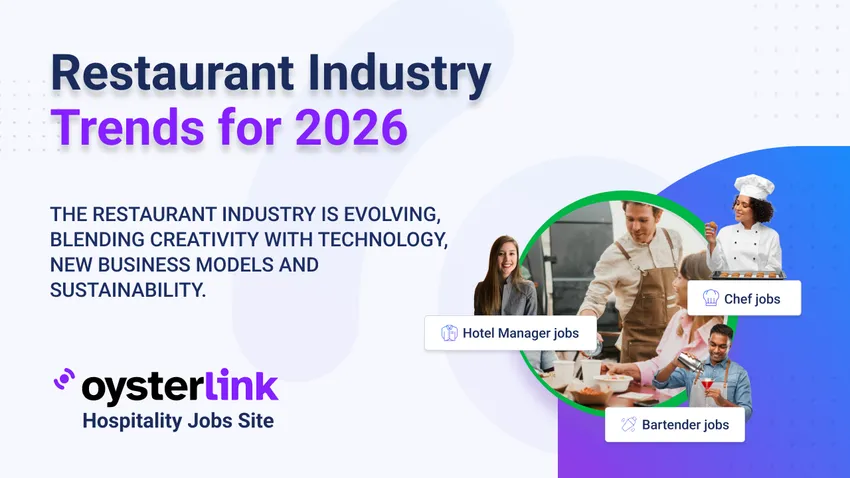




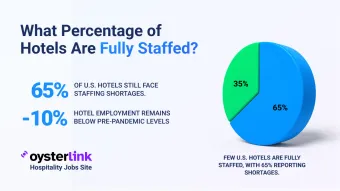
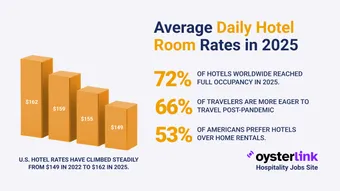
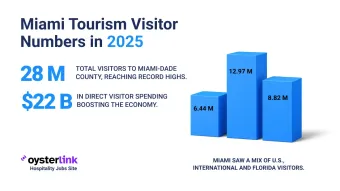
Loading comments...